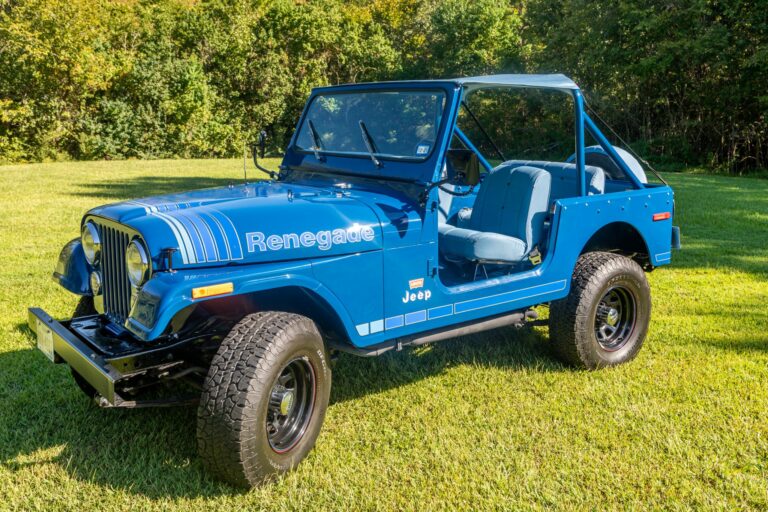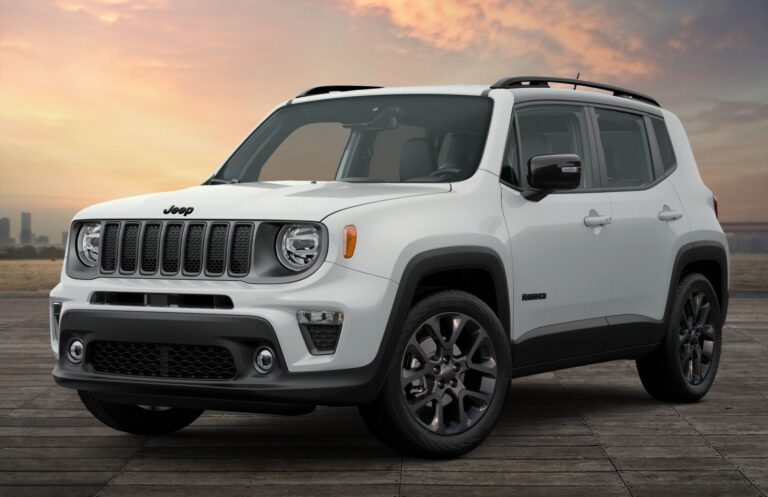4.0 L Jeep Engine For Sale: Your Ultimate Guide to Finding and Buying the Legendary Powerplant
4.0 L Jeep Engine For Sale: Your Ultimate Guide to Finding and Buying the Legendary Powerplant /jeeps.truckstrend.com
Introduction: The Enduring Heart of the Jeep
For decades, the 4.0L inline-six engine has been more than just a power unit; it’s been the very heart of countless Jeep vehicles, earning a legendary reputation for its rugged reliability, robust torque, and remarkable longevity. From the venerable Cherokee XJ to the iconic Wrangler TJ and the comfortable Grand Cherokee ZJ, this engine powered a generation of off-road adventures and daily commutes. Its simple, durable design made it a favorite among enthusiasts and mechanics alike, cementing its status as one of the most beloved engines ever produced by Chrysler/AMC.
4.0 L Jeep Engine For Sale: Your Ultimate Guide to Finding and Buying the Legendary Powerplant
Today, even with production ceased years ago, the demand for the 4.0L Jeep engine remains incredibly strong. Whether you’re looking to replace a worn-out motor, upgrade a less powerful variant, or embarking on a custom build, finding a 4.0L Jeep engine for sale is a common quest for many Jeep owners. This comprehensive guide will navigate you through everything you need to know, from understanding its legacy to where to find one, what to look for, and how to make a smart purchase, ensuring you get a power plant that continues to serve your Jeep for years to come.
The Enduring Legacy of the 4.0L Jeep Engine
The 4.0L High Output (HO) inline-six engine, a direct descendant of AMC’s robust six-cylinder line, made its debut in 1987. It quickly became the definitive engine for a range of popular Jeep models, including:
- Jeep Cherokee (XJ): 1987-2001 (arguably its most iconic home)
- Jeep Wrangler (YJ/TJ): 1991-2006
- Jeep Grand Cherokee (ZJ/WJ): 1993-2004
- Jeep Comanche (MJ): 1987-1992

What made this engine so special? Its relatively low-stressed design, coupled with a cast-iron block and cylinder head, provided incredible durability. Owners consistently reported hundreds of thousands of miles on original engines, often with minimal maintenance beyond routine oil changes. Its strong low-end torque was perfect for off-road crawling, while its straightforward mechanical nature made it easy to diagnose and repair, even for home mechanics. This combination of power, reliability, and ease of maintenance solidified its legendary status and ensures its continued relevance in the aftermarket.
Why Buy a Used 4.0L Jeep Engine? Benefits and Considerations
Deciding to purchase a used or remanufactured 4.0L engine comes with a unique set of advantages and challenges.
Benefits:

- Cost-Effectiveness: Compared to sourcing a new (and increasingly rare) crate engine or performing a complex engine swap to a different platform, a used 4.0L is significantly more affordable.
- Proven Reliability: You’re buying into a known quantity. The 4.0L’s track record speaks for itself, offering peace of mind that you’re getting a durable power plant.
- Parts Availability: The aftermarket is flooded with parts for the 4.0L, from gaskets and sensors to performance upgrades. Maintenance and repairs are straightforward and affordable.
- Ease of Swap: For Jeeps originally equipped with a 4.0L, swapping in another one is generally a direct bolt-in affair, minimizing complexity and labor costs.
- Maintain Authenticity: For purists or those looking to retain the classic feel of their Jeep, sticking with the original engine type is paramount.

Considerations:
- Age and Mileage: Most 4.0L engines available for sale are decades old and likely have high mileage. Their condition will vary wildly.
- Unknown History: Unless you’re buying from a meticulous owner or a reputable rebuilder, the engine’s past maintenance and use might be a mystery.
- Potential Hidden Issues: Cracks, wear, or internal damage might not be visible until the engine is fully inspected or even installed.
- Varying Conditions: You could find anything from a barely running core to a freshly rebuilt, dyno-tested unit. Prices will reflect this range.
Where to Find a 4.0L Jeep Engine For Sale
The hunt for a 4.0L engine can lead you to various sources, each with its own pros and cons:
- Salvage Yards / Junkyards: Often the cheapest option. You can sometimes find engines still in the donor vehicle, allowing for a limited inspection. However, condition is highly variable, and warranties are rare or very short-term.
- Online Marketplaces (eBay, Craigslist, Facebook Marketplace): A vast selection from individual sellers to small businesses. Prices can be competitive, but buyer beware is key. Always request detailed photos, videos, and ask for a detailed history. Local pick-up is often preferred for inspection.
- Specialized Jeep Parts Dealers & Remanufacturers: These businesses specialize in rebuilding and selling Jeep engines. They typically offer remanufactured engines with warranties, ensuring a higher level of quality and peace of mind. While more expensive than a junkyard pull, the added reliability and support often justify the cost. Some might even offer rare "new old stock" (NOS) crate engines, though these are exceedingly rare and pricy.
- Jeep Forums and Enthusiast Groups: Communities like JeepForum.com, NAXJA.org (North American XJ Association), and various Facebook groups often have "for sale" sections. You might find engines from fellow enthusiasts who know their vehicles well, potentially leading to a more transparent transaction.
- Local Mechanics and Off-Road Shops: Some shops might have spare engines from customer upgrades or rebuilds, or they can source one for you. They might also offer installation services.
What to Look For When Inspecting a 4.0L Engine
Thorough inspection is crucial, especially for used engines. If possible, bring a knowledgeable friend or mechanic.
- Visual Inspection: Look for signs of major leaks (oil, coolant), cracks in the block or cylinder head (especially common around the number 0331 casting on later heads), excessive corrosion, or significant impact damage.
- Oil Condition: Pull the dipstick. Black, sludgy oil indicates poor maintenance. Milky oil suggests coolant contamination (blown head gasket).
- Coolant Condition: Check the coolant reservoir and radiator. Rust-colored or sludgy coolant is a red flag.
- Crankshaft Pulley Wobble: Grab the harmonic balancer/crank pulley and try to wiggle it. Excessive play can indicate a worn crankshaft or balancer.
- Compression Test (If Possible): This is the gold standard. A healthy 4.0L should have consistent compression readings across all cylinders (typically 120-150 psi, with no more than 10-15 psi variation between cylinders).
- Listen for Noises (If Running): If the engine is still in a vehicle and running, listen for knocks (bottom end), ticks (lifters, exhaust manifold leaks), or unusual noises.
- Check Sensors and Wiring: While easily replaceable, damaged sensors or a hacked wiring harness can be an immediate headache.
- Verify VIN/Serial Numbers: Ensure the engine matches the description and isn’t stolen.
Types of 4.0L Engines Available (and what they mean)
Understanding the different categories of 4.0L engines for sale will help you make an informed decision:
- Used/Pulled Engines: These are engines removed from donor vehicles, sold "as-is." They are the most affordable but carry the highest risk due to unknown history and condition. Best for those on a tight budget who are comfortable with potential repairs or rebuilding.
- Remanufactured/Rebuilt Engines: These engines have been professionally disassembled, inspected, and had worn or damaged components replaced (e.g., new pistons, rings, bearings, camshaft, valve guides, seals). They are typically tested and come with a warranty (e.g., 1-3 years). This option offers a balance of cost and reliability, making it a popular choice.
- New Crate Engines (NOS – New Old Stock): Extremely rare and expensive, these are brand-new engines that were never installed in a vehicle. Finding one is like finding a unicorn.
- Long Block vs. Short Block vs. Complete Engine:
- Short Block: Includes the engine block, crankshaft, connecting rods, and pistons. It lacks the cylinder head, oil pan, timing cover, and all accessories.
- Long Block: A short block with the cylinder head(s) installed. It’s usually complete from the oil pan to the valve cover, but typically without intake/exhaust manifolds, alternator, power steering pump, etc.
- Complete Engine: Includes the long block plus most or all of the ancillary components like intake manifold, exhaust manifold, throttle body, fuel injectors, distributor, coil pack, alternator, power steering pump, AC compressor, etc. This is the easiest for a direct swap but often the most expensive.
The Purchase Process: Tips for a Smooth Transaction
Once you’ve found a potential engine, follow these steps for a successful purchase:
- Set a Realistic Budget: Factor in the engine cost, shipping/transport, potential ancillary parts needed (gaskets, sensors), and installation labor (if not DIY).
- Ask Detailed Questions: Don’t be shy. Inquire about mileage (if known), vehicle history, reason for removal, any known issues, and what exactly is included (e.g., sensors, accessories, wiring harness).
- Get a Warranty (If Available): For remanufactured engines, a warranty is crucial. Understand its terms: duration, coverage (parts/labor), and what voids it. For used engines, some reputable salvage yards offer a limited warranty (e.g., 30-90 days).
- Consider Transportation: A 4.0L engine is heavy (around 500 lbs dry). Plan for proper lifting equipment and a suitable vehicle for transport (truck, trailer). Shipping costs can be substantial.
- Payment Methods: Use secure payment methods. For local cash transactions, meet in a safe, public place. For online purchases, use platforms with buyer protection if possible. Avoid wire transfers for unknown sellers.
- Documentation: Always get a detailed bill of sale that includes the engine’s VIN/serial number, mileage (if applicable), price, date, and seller/buyer information.
Installation and Post-Purchase Tips
After your engine arrives, the work isn’t over.
- Professional Installation vs. DIY: If you’re not an experienced mechanic, consider professional installation. It ensures proper procedures, prevents costly mistakes, and often comes with a labor warranty.
- Replace Key Components: Even with a low-mileage used or remanufactured engine, it’s wise to replace common wear items during the swap:
- Water pump
- Thermostat
- Spark plugs and wires/coil pack
- All fluids (oil, coolant, power steering, transmission if applicable)
- All filters (oil, air, fuel)
- Rear main seal (especially on 4.0Ls, notorious for leaks)
- Engine mounts
- Oxygen sensors
- Inspect Ancillary Components: Thoroughly check the wiring harness, vacuum lines, and all sensors before reassembly.
- Break-in Procedure (for Remanufactured Engines): Follow the rebuilder’s recommendations for initial startup and break-in, which often involves specific oil, avoidance of sustained high RPMs, and varying engine speed for the first few hundred miles.
4.0 L Jeep Engine For Sale: Illustrative Price Guide
Please note: These prices are estimates and can vary significantly based on location, seller, engine condition, included accessories, and market demand. Always get a specific quote.
| Engine Type / Condition | Estimated Price Range (USD) | Typical Condition / Notes | Pros | Cons |
|---|---|---|---|---|
| Used (High Mileage) | $400 – $800 | Pulled from vehicles with 150,000+ miles. May require significant maintenance, gaskets, or a full rebuild. Often sold as "core" or "as-is." Includes basic long block. | Lowest cost of entry. Good for rebuild projects. | High risk of hidden issues. No warranty. Requires expertise. |
| Used (Low Mileage) | $800 – $1,500 | Pulled from lower mileage vehicles (under 100,000-120,000 miles). Visually inspected, sometimes with a limited run test. May come with a short, limited warranty (e.g., 30-90 days). Often just the long block. | Better chance of direct swap success. Potentially less immediate work. | Still no guarantee of long-term reliability. Mileage claims can be difficult to verify. |
| Remanufactured | $2,000 – $3,500 | Professionally rebuilt to factory specifications or better. New pistons, rings, bearings, gaskets, seals. Cylinder head often reconditioned or replaced. Typically dyno-tested. Comes with a warranty (1-3 years, unlimited miles common). Usually long block. | High reliability. Comes with warranty. Known good condition. Extended lifespan. | Higher initial cost. Still not "new." |
| New Crate (NOS) | $4,000 – $6,000+ | Extremely rare "New Old Stock" engines. Unused, never installed. Often includes complete engine with accessories. Availability is almost non-existent outside of very specialized dealers or collectors. | Brand new condition. Ultimate reliability (if stored properly). | Extremely expensive. Virtually impossible to find. May have aged seals/gaskets if stored improperly for decades. |
| Installation Cost | $800 – $2,000+ | Labor cost only. Varies by shop, location, and complexity. Does not include engine cost or additional parts (fluids, gaskets, sensors, etc.). | Professional work, often with labor warranty. | Significant additional cost. |
Frequently Asked Questions (FAQ) about 4.0L Jeep Engines
Q1: What years did the 4.0L engine come in Jeeps?
A1: The 4.0L engine was primarily used from 1987 to 2006 across various Jeep models, including the Cherokee (XJ), Wrangler (YJ/TJ), Grand Cherokee (ZJ/WJ), and Comanche (MJ).
Q2: Is a remanufactured 4.0L engine worth the extra cost over a used one?
A2: Generally, yes. A remanufactured engine offers significantly higher reliability and comes with a warranty, greatly reducing the risk of immediate failure or hidden issues compared to an "as-is" used engine. While the initial cost is higher, it often saves money and headaches in the long run.
Q3: What’s the average lifespan of a 4.0L Jeep engine?
A3: With proper maintenance, a 4.0L engine can easily last 200,000 to 300,000 miles or more. Many owners report engines going well beyond that, often limited by body rust or other vehicle components rather than engine failure.
Q4: Can I swap a 4.0L from a Cherokee (XJ) into a Wrangler (TJ)?
A4: Yes, generally. The long block itself is largely interchangeable between the XJ, TJ, and ZJ. However, you will need to swap over external components specific to your vehicle, such as the intake manifold, exhaust manifold, accessory brackets, sensors, and potentially the oil pan and flywheel/flexplate. Minor wiring harness adjustments might also be necessary depending on the year.
Q5: What are the most common issues with the 4.0L engine?
A5: Common issues include:
- Rear Main Seal (RMS) leaks: A notorious, though often minor, oil leak.
- Exhaust manifold cracks: Causes ticking noises, especially when cold.
- Cylinder head cracks (0331 casting): Affects 2000-2001 models primarily, leading to coolant consumption or mixing with oil.
- Crankshaft position sensor (CPS) failure: Can cause stalling or no-start conditions.
- Distributor gear wear (pre-2000 models).
Q6: How much does installation typically cost for a 4.0L engine swap?
A6: Installation costs vary widely depending on your location, the shop’s labor rates, and whether you provide the engine or they source it. Expect labor costs to range from $800 to $2,000+, not including fluids or any additional parts needed during the swap.
Conclusion: Powering Your Jeep’s Next Chapter
The 4.0L Jeep engine stands as a testament to robust engineering and enduring design. Its legacy of reliability and performance continues to make it a highly sought-after component for Jeep enthusiasts worldwide. While finding a 4.0L Jeep engine for sale requires careful consideration and thorough inspection, the rewards of a well-chosen power plant are immense.
By understanding the different types of engines available, knowing where to look, and performing diligent checks, you can confidently navigate the market. Whether you opt for a budget-friendly used pull or invest in a meticulously remanufactured unit, securing a healthy 4.0L engine means breathing new life into your beloved Jeep, ensuring countless more miles of adventure, on or off the beaten path. With this guide, you’re well-equipped to make an informed decision and get your Jeep roaring back to life with the legendary heart it deserves.
![]()





